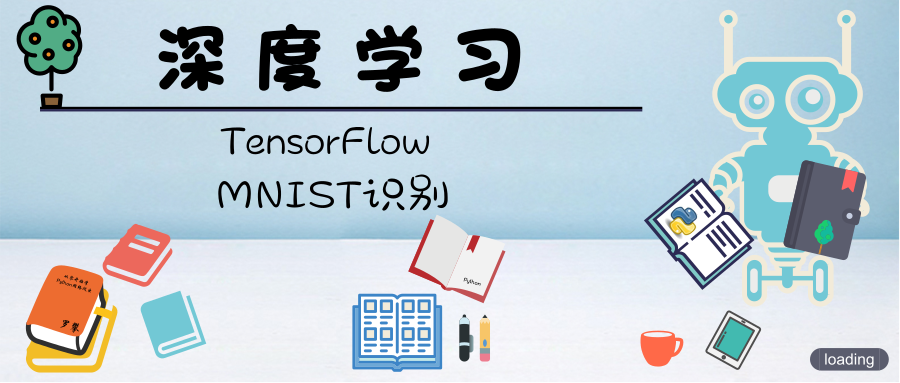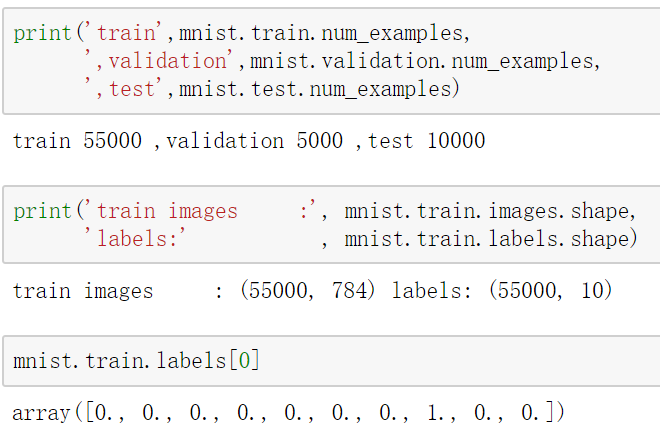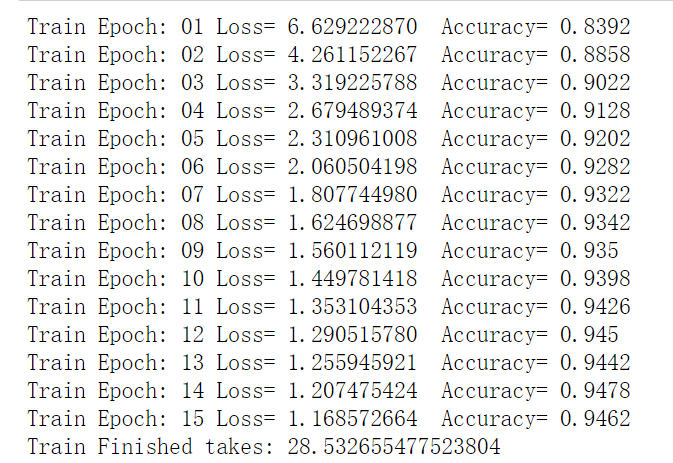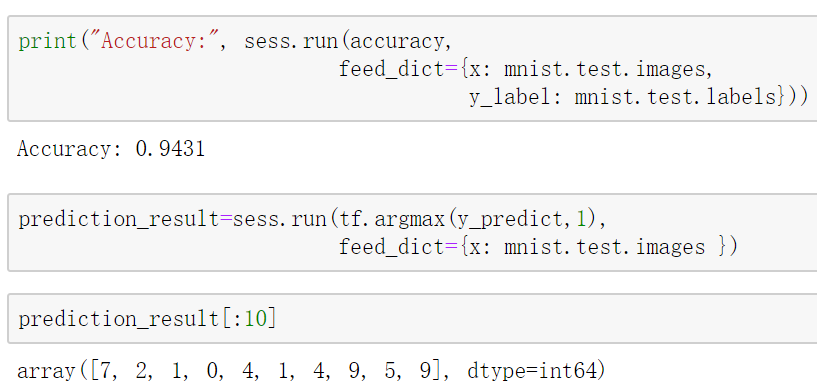
We still use MNIST handwritten font data set to see how we can use tensorflow to implement MLP.
data
Data downloading
Here we download the dataset through the tensorflow module.
import tensorflow as tf import tensorflow.examples.tutorials.mnist.input_data as input_data mnist = input_data.read_data_sets("MNIST_data/", one_hot=True)
In this way, we download the dataset. Here, one hot means that the label is a unique hot code, which means that our label does not need preprocessing.
Data situation
Let's look at the data through the following code:
- 55000 workouts
- 5000 validation set
- 10000 test sets

MLP model
Before we used keras for training, we only need to build a model, and then add to the neural network layer. tensorflow is a lot more complicated. Let's build our model step by step.
- First, the input layer. We use the placeholder to input
- 256 neurons in the hidden layer
- Output 10 neurons
def layer(output_dim,input_dim,inputs, activation=None): W = tf.Variable(tf.random_normal([input_dim, output_dim])) b = tf.Variable(tf.random_normal([1, output_dim])) XWb = tf.matmul(inputs, W) + b if activation is None: outputs = XWb else: outputs = activation(XWb) return outputs x = tf.placeholder("float", [None, 784]) h1=layer(output_dim=256,input_dim=784, inputs=x ,activation=tf.nn.relu) y_predict=layer(output_dim=10,input_dim=256, inputs=h1,activation=None)
Define loss function
Here we need to define our own functions and optimize them.
y_label = tf.placeholder("float", [None, 10]) loss_function = tf.reduce_mean( tf.nn.softmax_cross_entropy_with_logits (logits=y_predict , labels=y_label)) optimizer = tf.train.AdamOptimizer(learning_rate=0.001) \ .minimize(loss_function)
Accuracy evaluation
correct_prediction = tf.equal(tf.argmax(y_label , 1), tf.argmax(y_predict, 1)) accuracy = tf.reduce_mean(tf.cast(correct_prediction, "float"))
train
Train us to define 15 rounds.
trainEpochs = 15 batchSize = 100 totalBatchs = int(mnist.train.num_examples/batchSize) epoch_list=[];loss_list=[];accuracy_list=[] from time import time startTime=time() sess = tf.Session() sess.run(tf.global_variables_initializer()) for epoch in range(trainEpochs): for i in range(totalBatchs): batch_x, batch_y = mnist.train.next_batch(batchSize) sess.run(optimizer,feed_dict={x: batch_x,y_label: batch_y}) loss,acc = sess.run([loss_function,accuracy], feed_dict={x: mnist.validation.images, y_label: mnist.validation.labels}) epoch_list.append(epoch);loss_list.append(loss) accuracy_list.append(acc) print("Train Epoch:", '%02d' % (epoch+1), "Loss=", \ "{:.9f}".format(loss)," Accuracy=",acc) duration =time()-startTime print("Train Finished takes:",duration)

Test plus forecast
